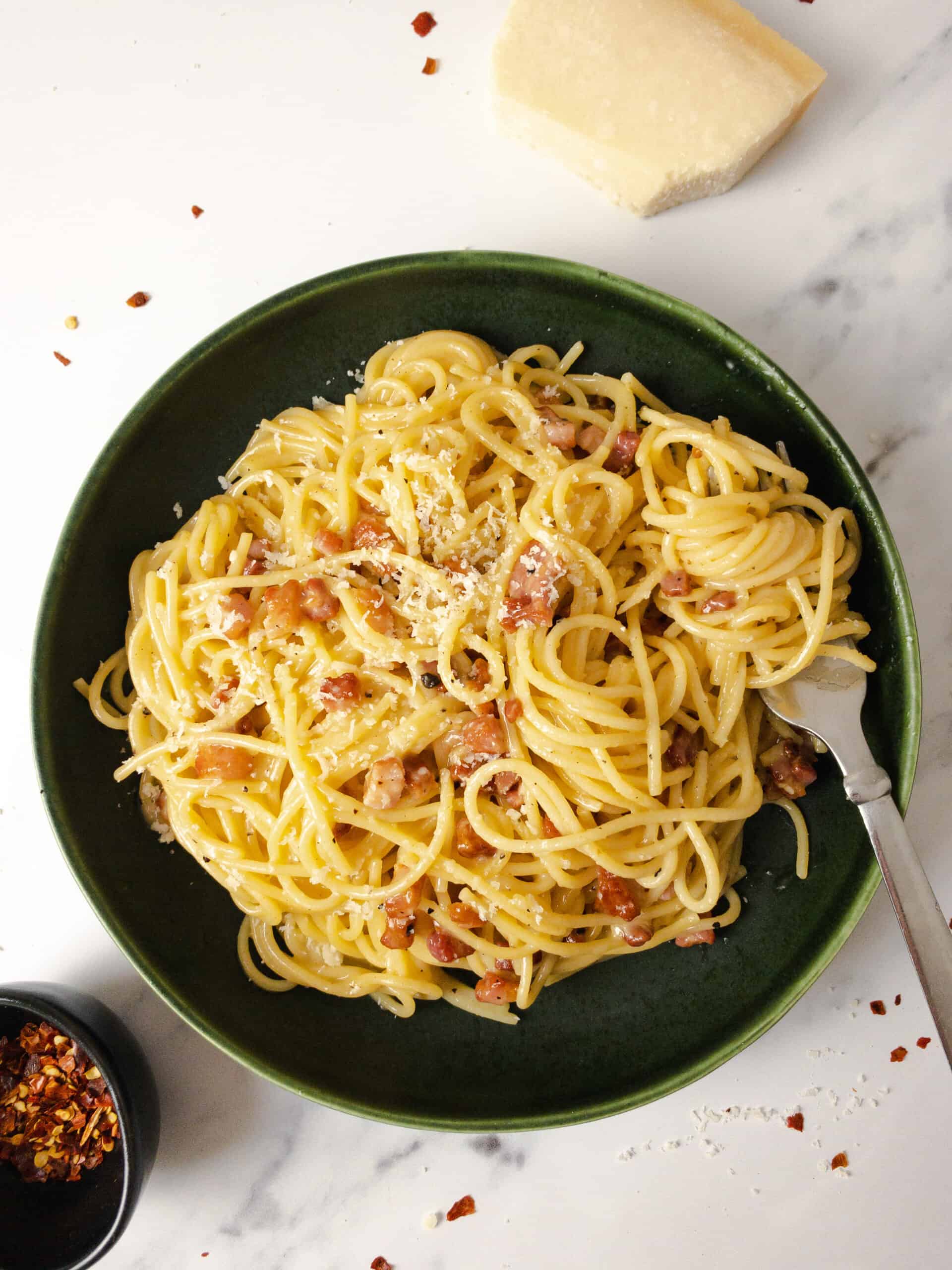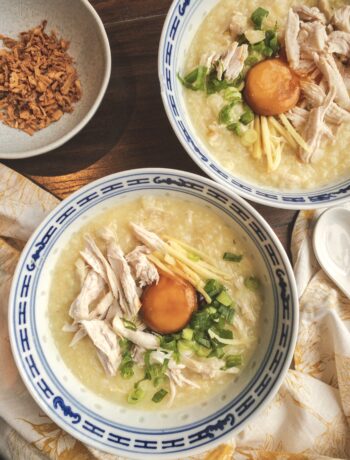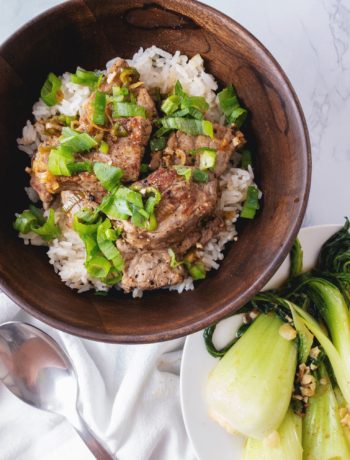This classic Spaghetti Carbonara recipe uses only 4 ingredients and cooks within the time taken for the pasta to finish cooking. Al-dente spaghetti coated with a rich, silky smooth sauce that’s studded with crispy guanciale goodness, perfection.
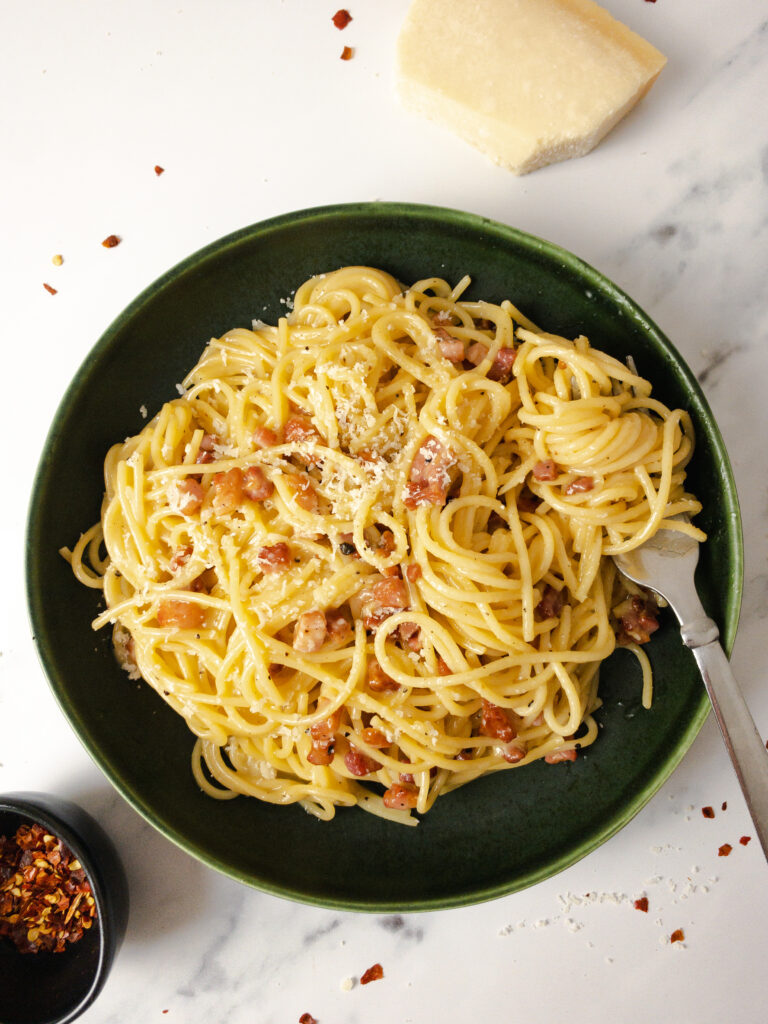
Spaghetti Carbonara is the epitome of simplicity at its best. It takes 4 humble ingredients – eggs, pasta, cheese, and pork – and turns them into something so rich and decadent. MAGIC! When properly emulsified, the sauce becomes all glossy, silky and just downright delicious. It is the ultimate minimalist pasta dish!!!
Keeping it true to its roots, this Carbonara recipe is a classic no-frills version i.e. no garlic, cream or green peas. The sauce is beautifully yellow from fresh eggs and is beyond creamy…without cream! With each bite comes bits of fatty guanciale (or pancetta) that’s been fried till they’re almost crispy and oozing tons of flavour.
P.s. If you ever see green peas in Carbonara, run away… FAR FAR AWAY. Even as a non-Italian, I know that that’s an abomination.
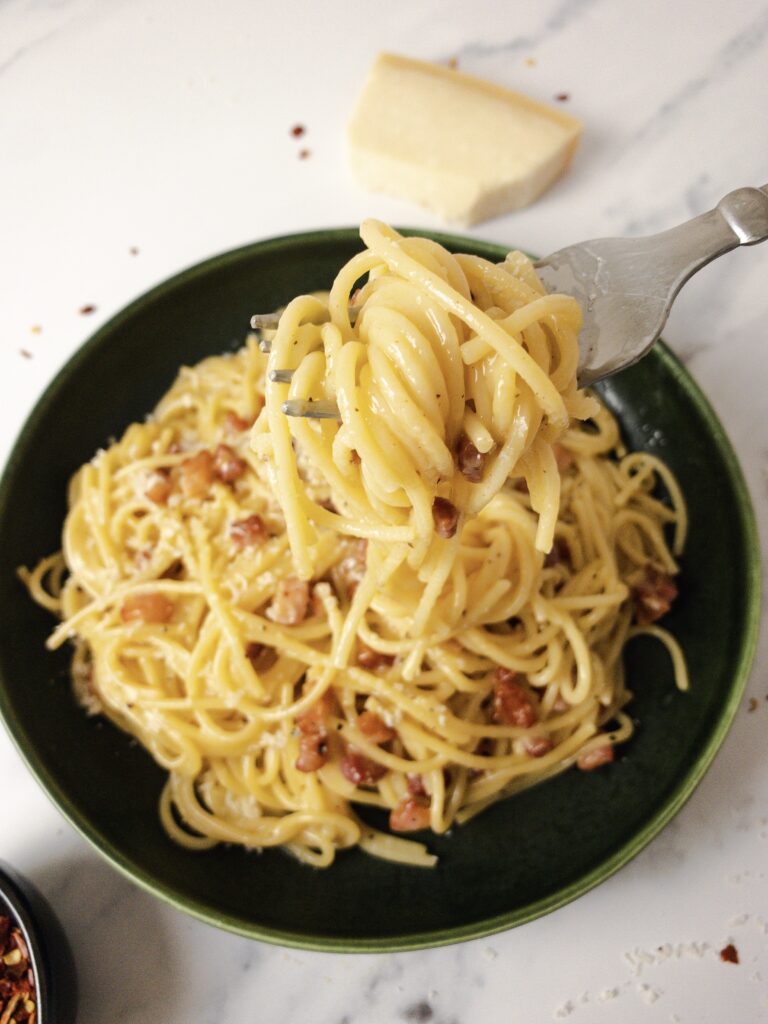
Guanciale vs. pancetta vs. bacon
Guanciale is a type of cured pork that comes from the jowl (or cheek) of a pig. It’s deliciously fatty, seasoned with herbs (e.g. sage and garlic), and then aged for at least 3 months which results in a more intense porky flavour. In contrast, pancetta is obtained from salt-cured seasoned pork belly – very similar to bacon although bacon is not exclusively from pork belly. Also, the way that bacon and pancetta are cut and cured makes them both very different from each other.
In Carbonara, pancetta is sometimes used in placed of guanciale although some purists argue that the latter is irreplaceable (a word of advice, I would avoid this discussion when dining with an Italian). I am neither Italian nor a purist so I say go ahead and use pancetta for this recipe if that’s what you can get your hands on.
Is it safe to use raw eggs in the sauce?
You could use pasteurised eggs if you’re very concerned but the eggs do actually get cooked by the residual heat of the pasta. So yes, safe!
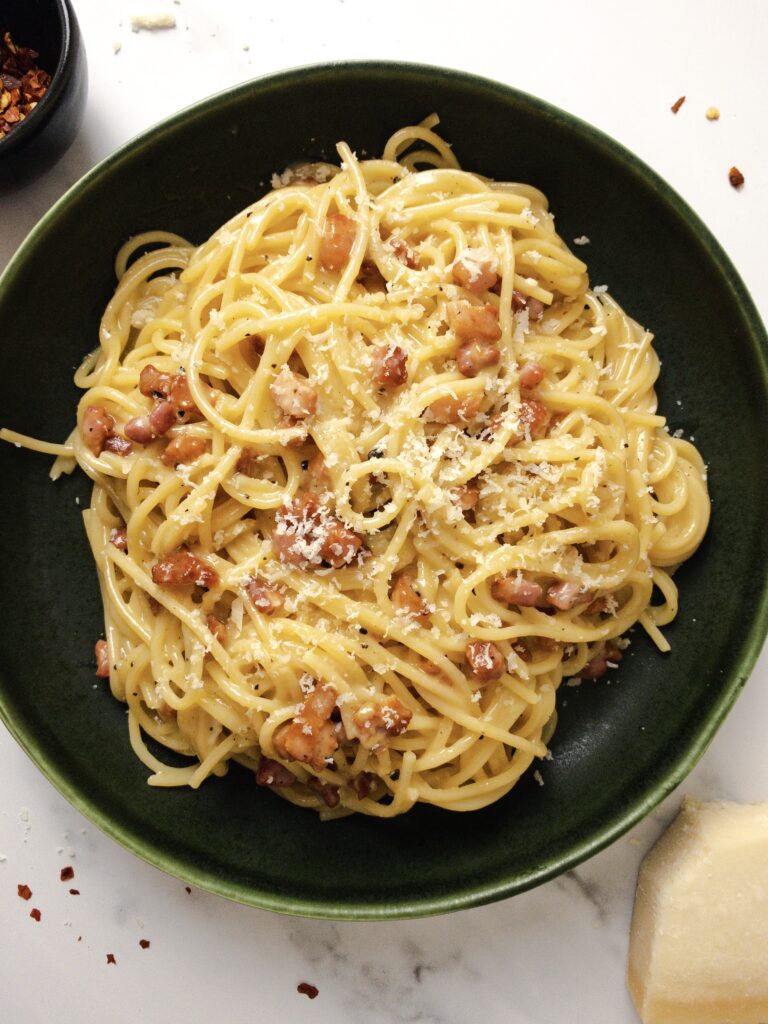
Tips for the best ever Carbonara
Given the simplicity of the dish, technique is actually key here. Here’s some tips to getting perfectly silky Carbonara every time:
1. Use room temperature eggs. Cold eggs can result in a clumpy sauce!
2. Take it off the heat. You cannot, I repeat… CANNOT, mix the spaghetti and sauce over the heat (unless scrambled eggs spaghetti was what you’re going for). The residual heat from the pasta (not the heat from the pan) is what sets the eggs to create that lovely velvety sauce. So while you’ll obviously need to turn off the heat under the pot before you mix in the egg-cheese mixture, you also need to physically move the pot off the hob. If you leave it on, the heat will end up scrambling the eggs in the sauce.
3. Keep the pasta moving. Make sure that you’re mixing the pasta with the sauce rigorously because you want the sauce to be distributed evenly. I recommend adding the egg-cheese mixture with one hand and in the other, have your tongs or spoon ready to toss the pasta around. Once you’ve poured in all the sauce, grab the handle and move it about while you continue to mix the pasta (kind of in opposite directions). You want every inch of pasta to be coated in the luxurious sauce.
This classic Spaghetti Carbonara recipe uses only 4 ingredients and cooks within the time taken for the pasta to finish cooking. Al-dente spaghetti coated with a rich, silky smooth sauce that’s studded with crispy guanciale goodness, perfection. Bring a pot of water to a boil and salt it generously. Add in the dried spaghetti and cook as per package directions. While the pasta is cooking, add the cheese, eggs, egg yolk and pepper into a bowl and whisk until well combined (i.e. no streaks of egg yolks/white). Do not add the salt yet as the guanciale brings quite a lot of salt to the dish. Set aside until ready to use. In a cold pan, add the diced guanciale and turn the heat to medium. This will allow the fat to render out slowly. When it’s browned and crisp (but not too crispy), take the pan off the heat. Scoop out 1/2 cup of the pasta cooking water and set aside in case you have to adjust the thickness of the sauce. Using a pair of tongs, transfer the cooked pasta from the pot into the pan with the guanciale. Toss it well to ensure that the spaghetti is well coated with the guanciale fat. Promptly pour in the egg-cheese mixture to the pan and mix rigorously. Doing so helps to emulsify the sauce and make it creamy. The sauce should be loose enough to drag the pasta through; if it’s too thick, adjust the thickness of the sauce using the reserved pasta cooking water. Give it a quick taste test and season with salt if desired. Transfer it to your serving plate and serve immediately. Spaghetti Carbonara
Ingredients
Instructions

